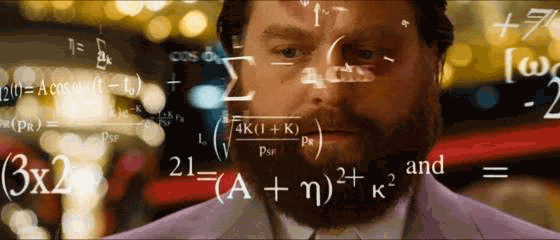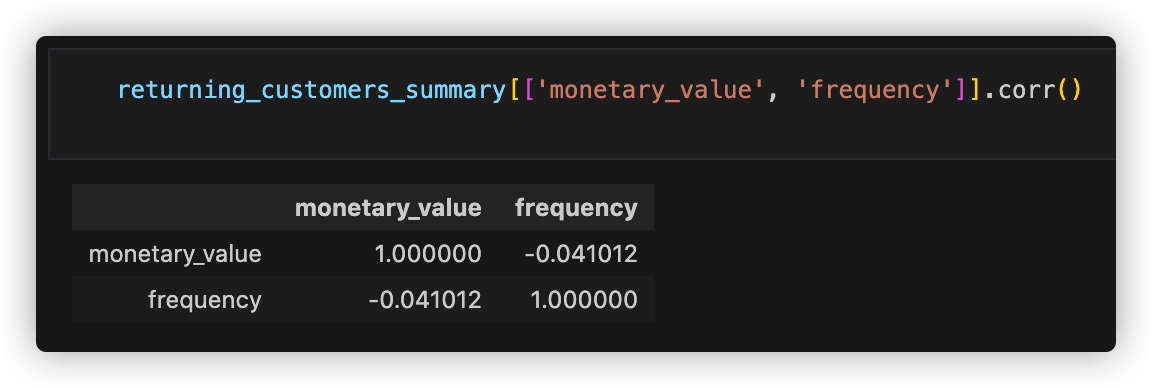Customer Lifetime Value
客户终生价值-CLV
简介
企业要活下去,终究是要讲究盈利的,尽管现代营销理论中谈及的 customer-based,终点也是获利。

为此企业花钱获客、投广告、促销、让利等等。但总有些用户是不买账的,没啥付费意愿,拉低了盈利。就像有人会买电商等平台的会员,但也有人不会购买这个会员。从企业盈利的角度来看,企业需要识别这些行为模式,细分客户并采取相应的行动。like

本文将记录如何用 Lifetimes 测算客户终生价值(Customer Lifetime Value, CLV)

一顿扒,大胆推测 Lifetimes 这个包的作者 在 Data Science 的工作中有遇到相关的问题,一不做二不休基于相关论文、manual、R的包等等参考资料,整了个Python版本。(是我羡慕及崇拜的样子)
整体纵向来看,Lifetimes 分为两大部分:一是数据准备等基建工作;二是模型等应用层。前者“基建”工作主要包括 utils.py里的数据处理部分,将客户维度的明细数据,汇总为 Frequency, Recency, T, Monetary_value 维度;以及切分时间外样本等。后者应用层部分主要是各Model的实现,基于利益细分为两大部分:(1)能预测未来交易的Model(transaction_prediction_model),譬如 Pareto/NBD, BG/NBD Model;(2)测算CLV的模型gamma_gamma_filter.GammaGammaFilter 。
这里的“Model”是传统统计学的方法,假设 xxx 服从xxx分布,进行统计建模,完成未来交易次数、CLV的估计。
For all models, the following nomenclature is used:
-
frequencyrepresents the number of repeat purchases the customer has made. This means that it’s one less than the total number of purchases. This is actually slightly wrong.
It’s the count of time periods the customer had a purchase in. So if using days as units, then it’s the count of days the customer had a purchase on.
-
T观测时点 - 第一次购买时间
represents the age of the customer in whatever time units chosen (weekly, in the above dataset). This is equal to the duration between a customer’s first purchase and the end of the period under study.
-
recency观测时点内,最近一次购买时间 - 第一次购买时间
represents the age of the customer when they made their most recent purchases. This is equal to the duration between a customer’s first purchase and their latest purchase. (Thus if they have made only 1 purchase, the recency is 0.)
-
monetary_value⚠️ 均值
⚠️ 客户维度的 value,譬如利润、收益
represents the average value of a given customer’s purchases. This is equal to the sum of all a customer’s purchases divided by the total number of purchases. Note that the denominator here is different than the frequency described above.
以客户维度的明细数据为例完成 CLV 的测算

CLV
假设有张表(transaction_data)记录着客户交易的明细数据,形如
| cust_no | date | amt |
|---|---|---|
| a1 | 2020-02-15 | 113.3 |
| a2 | 2020-02-15 | 213 |
| a1 | 2020-03-05 | 12 |
| a3 | 2020-02-25 | 4.66 |
变量衍生
|
|
Paper 中是假设交易频次和金额是独立的
Monetary value is independent of the underlying transaction process.

计算
|
|
这个方法更多是针对存量户测算CLV,在观测时点内Frequency>0,对于新户或者说没发生交易的用户来说就不适用了。不过,看着似乎可以参考 🔗这个 的思路。结合测算后的CLV join 些 X,训练个回归模型,实现CLV的预测
Reference
- Principles of Marketing, 17th.
- https://github.com/CamDavidsonPilon/lifetimes
- Counting your customers: who are they and what will they do next?
- “Counting Your Customers” the Easy Way: An Alternative to the Pareto/NBD Model
- RFM and CLV: Using iso-value curves for customer base analysis
 胡子叔叔的小站
胡子叔叔的小站